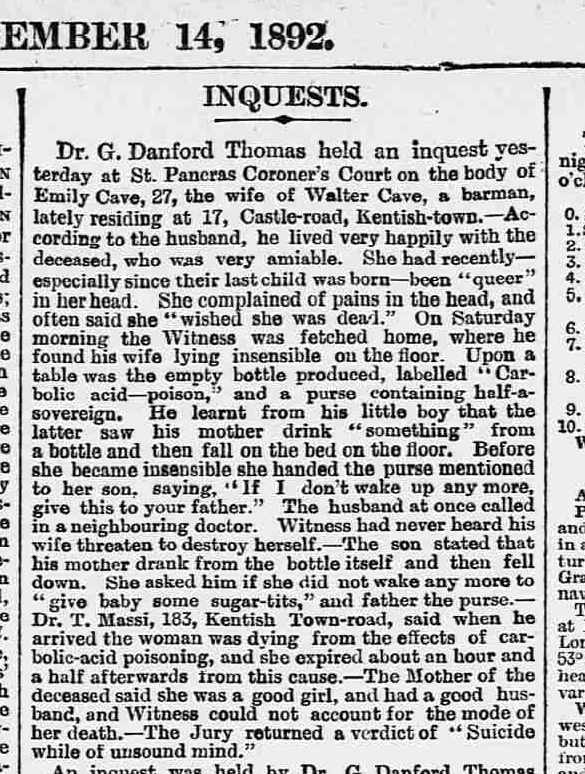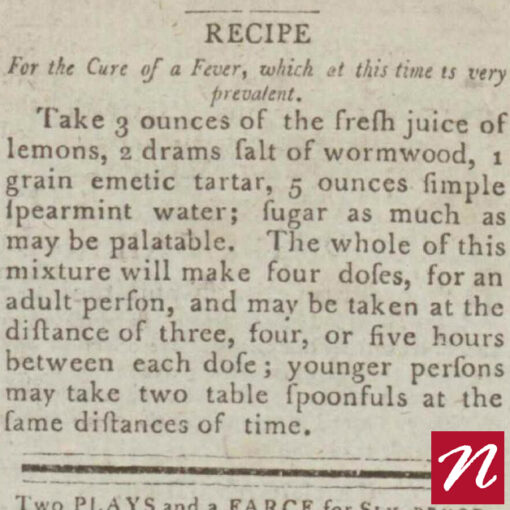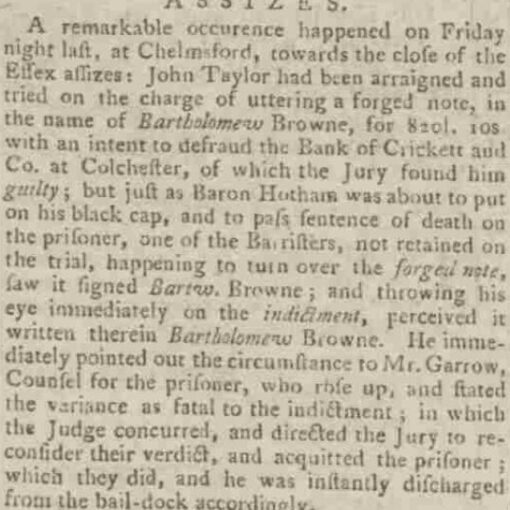Liverpool Evening Express – Tuesday 20 January 1925
CHASE AFTER MAN WITH DIAMONDS.
STORY OF RAID ON JEWEL SHOP AT WARRINGTON.
Evening Express Correspondent.
Warrington, Tuesday.

John Mackay, a young Irishman, no fixed abode, was committed at Warrington today to the Liverpool Assizes on a charge of breaking into a jeweller’s shop in Sankey Street, Warrington, and stealing a tray of 23 diamond and gold rings valued at £248 7s (about £10,182 in 2000’s).
It is stated that about 5 p.m. on Monday last, Matthew Maddigan, of Schoolbrow, Warrington, saw Mackay break the window with a stone and run away with the tray. He chased Mackay, and with the assistance of John Howard, of Orford Lane, Warrington, held the man until the police arrived.
The stolen property was recovered.
Mackay today said: “It was after a long tramp. I had had nothing to eat, I had a second stone in my pocket, and I dropped it on the way, otherwise I would not have given Maddigan a sore face. He should mind his own business.”
The magistrates complimented Maddigan and Howard.
Mackay shouted from the dock: “And I hope you get the V.C. for it.”
Analysis and Historical Context
Legal Implications in 1925
During the 1920s in the UK, crimes such as theft and burglary were treated with significant severity. The case of John Mackay being committed to the Liverpool Assizes suggests that the crime was deemed serious enough to warrant trial at a higher court, rather than being dealt with by local magistrates. Assizes courts handled major felonies, including theft of high-value goods, and could impose severe sentences, including hard labour or imprisonment.
- Sentencing: Theft of items valued at over £248 (a significant amount at the time) could result in a lengthy prison sentence.
- Public Response: The involvement of citizens in apprehending criminals was encouraged, and their efforts were often praised by magistrates, as seen in the commendation of Maddigan and Howard.
Implications for Family History Research
This article provides valuable genealogical details for those researching individuals in Warrington during the 1920s.
- Names and Addresses: The mention of Matthew Maddigan of Schoolbrow and John Howard of Orford Lane provides concrete information that can be cross-referenced with census records, electoral rolls, and street directories.
- Occupational Clues: Maddigan and Howard’s involvement in the case suggests they may have been community figures or had roles that brought them to the area frequently.
- Social Context: The mention of “no fixed abode” for Mackay provides insight into the social conditions of the time, indicating the prevalence of homelessness and economic hardship.
General Historical Context
The 1920s in Britain were marked by post-World War I economic challenges, high unemployment, and social unrest. Crimes such as theft were often linked to poverty and desperation, as reflected in Mackay’s statement about his hunger. The idea of public vigilance and assisting law enforcement was widespread, as community members were expected to take an active role in maintaining law and order.
Usefulness of the Article
This article is valuable for multiple reasons:
- Criminal History: It sheds light on local crime and justice in early 20th-century Warrington.
- Genealogy: Researchers looking for ancestors in Warrington might find leads on family members involved in law enforcement or public service.
- Social History: The story illustrates societal attitudes towards crime and punishment, as well as economic struggles post-WWI.
- Legal Studies: A useful case for understanding historical legal proceedings and the role of Assizes courts in handling theft cases.
In summary, this short newspaper report provides a fascinating glimpse into crime, justice, and social conditions in 1925 Warrington, offering valuable insights for researchers interested in history, genealogy, and law.
The Liverpool Evening Express

The Liverpool Evening Express was a local newspaper that circulated in Liverpool, England, from 1870 to 1958. Originally published by C. Tinling & Co. Ltd., the paper merged with the Liverpool Echo in 1958.
C. Tinling & Co. Ltd., established in 1808 by Thomas Kaye, was a prominent newspaper proprietor and general printer based at 55 Victoria Street, Liverpool. The company also published the Liverpool Courier, a conservative newspaper that began as a weekly publication in 1808, transitioned to bi-weekly in 1858, and became a daily in 1863. Additionally, they produced the Football Express and the Weekly Courier.
The Liverpool Evening Express provided extensive coverage of local and international news, contributing significantly to Liverpool’s media landscape. Its archives, spanning from 1874 to 1955, have been digitised and are accessible through the British Newspaper Archive.
This resource offers valuable insights into historical events and societal developments during that period.
For researchers and enthusiasts interested in exploring the Liverpool Evening Express archives, the British Newspaper Archive provides a comprehensive collection of its issues.
Additionally, the Liverpool City Council’s libraries and archives hold microfilmed copies of the newspaper, which can be accessed for in-depth local research.
Man Caught After Daring Warrington Jewel Heist – Local Heroes Stop Thief in His Tracks! 🏃♂️💨#Warrington #CrimeNews #TrueCrime #HistoricCrime #1925 #JewelHeist #LocalHeroes #UKHistory #EveningExpress #OnThisDay




